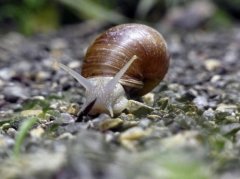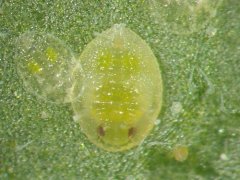What are the whitefly pests? What are the harmful symptoms of whitefly?
What are the common whiteflies? Whitefly will bring some harm to agricultural products, let's take a look at it together and understand it first.
Silver leaf whitefly belongs to Aleyrodidae of Homoptera family Homoptera. Since it invaded Taiwan in 1978, more and more kinds of crops have been harmed, and the damage has become more and more serious. its economic importance has increased sharply, and it has been entrenched for 14 years and has transformed into a super pest. Its food habits are miscellaneous, horticultural crops such as vegetables or flowers are affected by it, harming more than 700 kinds of crops, this insect is small, the generation is short, it can produce more than ten generations a year, reproduction is fast, and drug resistance is also strong.
According to the different crops, their harm characteristics and habitat habits have their own characteristics. at present, the potential and objects of harm continue to exceed the record. in addition to feeding on crop culture solution, there are more important vector insects of a variety of viral diseases. In particular, the second cropping in the Spring and Autumn period, Taiwan is the peak period for horticultural crops such as vegetables, flowers and miscellaneous grains, with abundant food and suitable meteorological conditions, and is often abandoned because of the rampant silver leaf whitefly.
Common whiteflies
At present, there are four common species of whitefly in Taiwan, such as silver leaf whitefly, spiral whitefly, tobacco whitefly and greenhouse whitefly. Whitefly is a small insect with yellow adult body and two pairs of white wings. Spiral whitefly is the largest in size, and adults secrete white cotton wax powder on the back of leaves. Silver leaf whitefly is similar to tobacco whitefly. Silver leaf whitefly comes from strain B of tobacco whitefly. Because it is also known as Christmas red line on Christmas red, it has slender white wings and stands at an angle of 45 degrees from the leaf surface. Greenhouse whitefly is also similar in size, with slightly broad and round wings and parallel to the leaf surface when at rest. Greenhouse whitefly is an insect in the colder zone, which lives in the warm net room in the north-central part of the country. Tobacco, silver leaf and spiral whitefly are distributed in the whole province, and the higher the density is in the south, especially in the middle and south, which is often warm winter and long-term drought. It is distributed in flat land and low-altitude mountain areas; in terms of damage to crops, spiral whitefly is mainly woody plants, which can be found occasionally on high-stem crops such as papaya; silver leaf whitefly, tobacco whitefly and greenhouse whitefly mainly damage short and herbaceous plants, vegetables, miscellaneous grains, flowers, weeds, such as tomatoes, melons or legumes, among which silver leaf whitefly has the highest density, the most serious damage and the most difficult to control.
Host plant
Silver leaf whitefly is good at migration and has a wide range of hosts. According to the survey records, more than 700 kinds of crops can be harmed at present, and the types and seriousness of the crops are constantly increasing. Horticultural crops, such as Solanaceae, Leguminosae, Cucurbitaceae, leafy vegetables, flowers and so on, are not immune except Gramineae crops. The more serious ones are tomato, cantaloupe, edamame bean, cauliflower, kale, radish, eggplant, lavender, maple, Christmas red, Malaba chestnut and African chrysanthemum.
Table 1. Distribution of common whitefly species and main host plants in Taiwan at present

Life habits and harmful characteristics
The female laid 200,400 eggs in her lifetime, the eggs were oblong, the first birth was white and brown, scattered on the back of the tender leaves, the newly hatched nymphs were irregular, glittering and translucent yellow and flat oval, the nymphs were four years old, the first instar had enough to find a suitable host, and the feet degenerated after the second instar, fixed on the leaf back of the middle and old leaves and raised with stinging mouthparts, and then the adults flew to the young leaf dorsal tissue of the new shoots to lay eggs. The adult has two pairs of obvious white bladder, the body is weak, and the flying ability is poor. When disturbed, it still returns to the back of the original plant after a little hover at or around the plant. Its body is light and thin, and it is generally spread by the wind. Adults and nymphs transmit virus diseases in addition to direct piercing and sucking fluid, causing leaves to wrinkle, yellowing, early defoliation, and secreting a large amount of honeydew to induce coal disease, affecting photosynthesis. Weaken the plant and hinder the normal growth of the crop. Both adults and nymphs like to live in groups on the back of leaves, with backlight, overlapping generations, and live in groups, and there is almost no whitefly on the leaf surface. It is not uncommon that the whole garden is abandoned because of its vector tomato leaf roll disease and muskmelon virus disease. Edamame bean loses its original flavor because of its harm, and the radish part is killed to reduce its weight by 1 beat 3 and lose its original spicy taste. Meteorological factors whitefly are not only favored by many kinds of food, but also very sensitive to climate change. 25.28 ℃ is the most suitable temperature for development, and the density is high in dry and warm conditions. Cold, hot, high humidity, rainy and windy are mostly unfavorable to the reproduction of their populations. It occurs in Taiwan all year round, from the gradual increase in autumn density to the turn of spring and summer, and the peak period is from September of each year to May of the following year before Meiyu comes. Especially in the early and late spring, the food is abundant, the climate is suitable, the management is a little careless, and the density is often out of control.
- Prev

Prevention and control of grape diseases and insect pests: control methods of flat snails for grape pest control
Prevention and control of flat snails in vineyards: there are also many diseases and insect pests in grapes. today, let's first learn about the prevention and control of snails. The flat snail in vineyard is an important pest of grape, and the traditional control methods are not effective. 95-100% of flat snails can be controlled by using the bottle method.
- Next

How to treat whitefly? What is the control method of whitefly and what medicine is used for whitefly?
We should understand the characteristics of pests and various control methods, apply correct control techniques, observe the safe harvest period, change farming management methods, and select pesticides with low toxicity to natural enemies in order to protect or release natural enemies, so as to reduce pesticide residues and pollution and ensure hygiene.
Related
- A one-day flower show brings 130 million yuan in orders! Nanhai, this Phalaenopsis exhibition is amazing
- What do the flower language and meaning of Lutheran tree mean? Precautions for planting Lutheran tree
- Encounter Chaoshan Kongfu tea, not without this cup of Phoenix single clump
- The durian market in Vietnam and Thailand is flooded. The price of imported durian has plummeted by 30-40% in a month.
- Shanghai solved the problem of local vegetable supply by planting 80,000 mu of green leafy vegetables.
- Wageningen University has become the best agricultural university in the world for the seventh time in a row.
- The strongest export season of South African grapes is full of challenges, with exports to Russia falling sharply by 21%.
- Sri Lanka is on the verge of bankruptcy, "Tea for debt" Organic Agriculture Revolution aggravates the Food crisis?
- Turning waste into earthworm manure and worm manure into organic fertilizer-A new choice for auxiliary farming
- Organic rice growers shoulder the responsibility of nurturing agricultural talents! Yinchuan Sustainable Farm with Organic Life Camp

